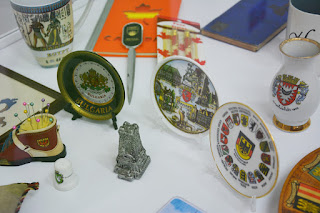 In our century, coats of arms represent the most solemn segment of emblems in use. Their highly elaborate artistic aspect and the enciphered symbolism that cannot be penetrated at first adds to the solemnity a touch of mystery intimidating to the man of today. Or, once the coat of arms could be seen everywhere, because it also had the function of a property mark. It was worn by numerous objects, including everyday and not very solemn ones.
In our century, coats of arms represent the most solemn segment of emblems in use. Their highly elaborate artistic aspect and the enciphered symbolism that cannot be penetrated at first adds to the solemnity a touch of mystery intimidating to the man of today. Or, once the coat of arms could be seen everywhere, because it also had the function of a property mark. It was worn by numerous objects, including everyday and not very solemn ones.
On the occasion of the tenth anniversary of the establishment of the Heraldry Cabinet within the Office of the President of the Republic of Moldova (April 1, 2013, by the appointment of the first State Heraldist of the Republic of Moldova), this exhibition is part of the series of events promoting heraldic knowledge and use, supported by the National Commission of Heraldry attached to the President of the Republic of Moldova, from the moment of its establishment, with the support of traditional scientific partners, among which the National Museum of History of Moldova takes the leading place.
The purpose of the exhibition is to sensitize public opinion on the fact that a coat of arms can and must be used in everyday life without any restraint, in some mundane activities and situations. It is primarily about family and territorial coats of arms, because national symbols - official, cultural and natural - have never left our visual space, occupying more and more space.
The table, which brings together family members or friends, colleagues or relatives, has always been an opportunity to promote ideas. Table, tea and coffee services, cutlery, napkins and tablecloths, adjacent decorations and surrounding furniture began to be decorated with coats of arms right from the appearance of heraldic insignia. Thus, the compartments "A tea with a coat of arms", "A cup of coffee with a coat of arms", "A dairy with a coat of arms", "A beer with a coat of arms", "A wine with a coat of arms", "A strong drink with a coat of arms", "At the table with the Dutch royal family" reflects precisely this extremely widespread worldwide use of the coat of arms and complementary emblems.
The compartment "At the work table with coat of arms" marks the use of armoured objects when the man is working: at the writing table, at the sewing table, etc. Two other compartments "At the gaming table with a coat of arms" and "At a cigarette with a coat of arms" mark the other facet of human nature - the pleasure of entertainment. Two applied, historical domains were chosen, which also correspond to the structure of the collection.
The last two sections - "Daily heraldic use in the Republic of Moldova" and "Daily heraldic use in Romania" - present the situation in the Romanian space, which has not evolved much and is still mainly limited to the promotion of national heraldic symbols - the coat of arms and the state flag -, the other types of heraldic and complementary emblems remaining in the shadows. This exhibition is organized precisely to change this situation in our country, where the economic premises already allow the embodiment of such ideas that must not be delayed.
After the exhibition closes, most of the exhibited pieces, with historical value, will be donated to the Museum.
The exhibition "With the coat of arms on the table - in the world and at home..." will be open from March 30 to April 30, 2023, in the hall on the ground floor of the National History Museum of Moldova, str. 31 August 1989, 121A.





























































